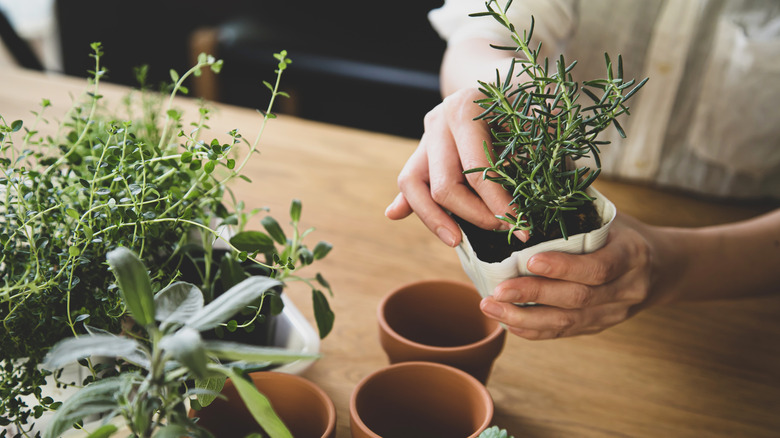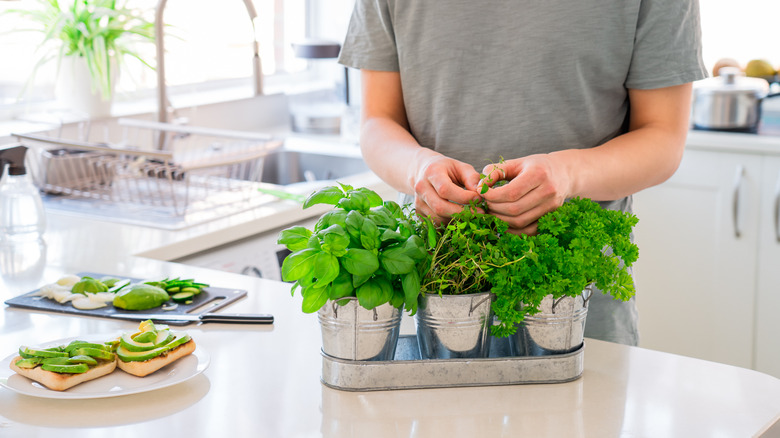The Common Mistakes To Avoid When Growing Herbs Indoors
Having fresh herbs on hand will help you step up your culinary game while boosting flavor in everything from drinks to desserts. From fresh mint for your mojito, freshly-picked basil next to a summer-ripe tomato, or a sprinkle of lavender on your ice cream, herbs are hearty plants that are low-maintenance and easy to grow — as long as you avoid common mistakes caring for them.
Remember, you're creating the environment the plants need to thrive. In general, give each herb plenty of space to grow in its own container. If you're using one large pot, you can mix various herbs together, just be sure they all have room to spread and that they get the same amount of light and water. Keep an eye on the water level and be careful not to overwater since it can lead to root rot; your best bet is to allow the soil to dry out just a little bit between waterings. Misting herbs is a great way to keep leaves and stems clean and helps to keep the plants and surrounding soil lightly moistened — Just be sure to use a pot that allows for complete drainage. Potted indoor herbs, like most houseplants, hate wet feet.
Pot placement and trimming herbs
Pot placement is important too. Herbs thrive in bright, indirect light, but be sure you're not cooking your plants by placing them directly in the path of intense sunlight. Too much sun will cause the leaves to wither and die. But too little light will leave them pale and leggy with weak stems as they struggle to reach natural light.
Another way to care for herbs is to cut them back and use them as they grow. Parsley is a great example — Trim parsley leaves and stems and use it as a flavor maker in salads, tabbouleh, or as a garnish for meat and fish dishes. Don't take more than a third of the plant at a time, and you'll find your plant grows bushier after being trimmed. If parsley grows without pruning, the stems become woody and tough to chew. Also, without trimming, the plant will grow a seed pod, which is best used to plant more parsley. If you see your plant sprouting flowers or seed heads, simply pinch them off so the plant returns to growing additional leaves.
Not only are herbs from basil to rosemary fragrant and useful in the kitchen, but they have beautiful leaf shapes and colors and are attractive additions to indoor gardens, whether as part of a larger green interior landscape or as a stand-alone kitchen garden.

